Mangoes, memories and the magic of Rajshahi
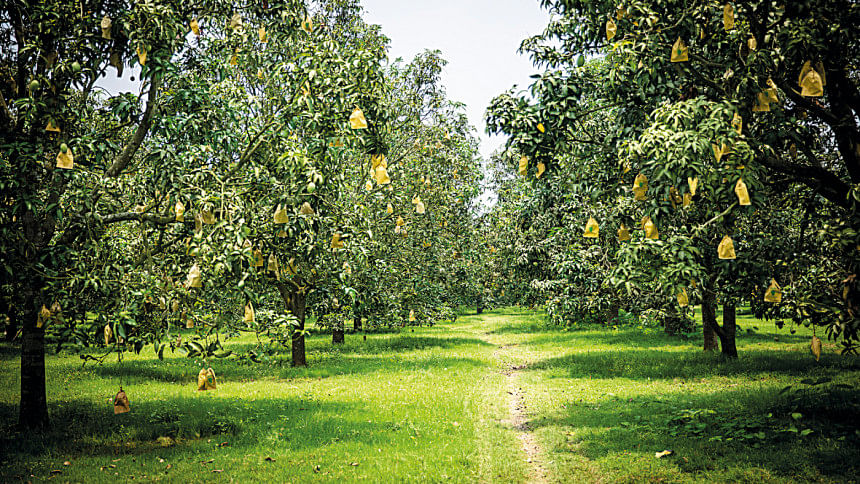
When you grow old, you slow down your pace and seek calm. You want to be away from the hubbub of city life and live for yourself; toying with this realisation, I am in search of a quiet place to drop my anchor. I am twiddling between Rajshahi, Faridpur, and Barishal.
These are fantastic, quaint cities, portraying the picture-perfect Bangladesh that we read about in books. Fuss-free, simple, happy people surrounded by green nature, crystal clear ponds bordered by tall palm trees, and devoid of any chaos or pollution.
I do not know how many of you will agree with me, but whatever little I have seen of these cities is enough to draw me to these idyllic sanctuaries and captivating landscapes nestled in the heart of "sujala sufala sasya shyamala", Bangladesh.
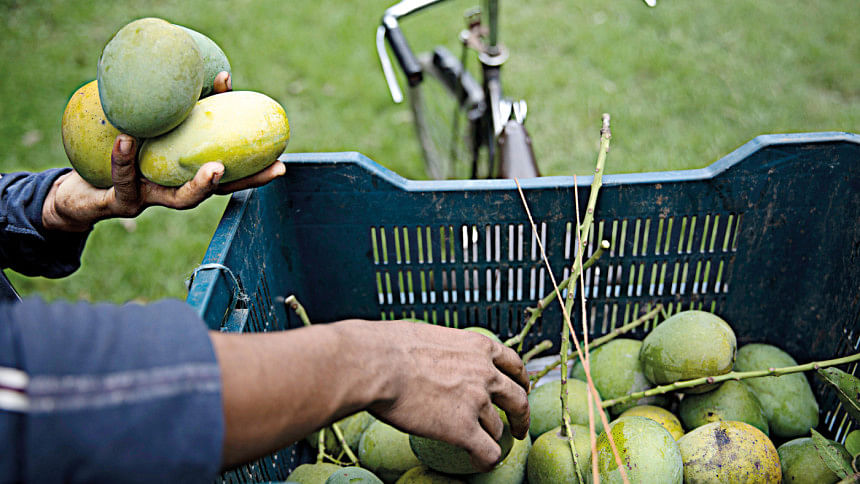
After what felt like eons, I took a train ride on the Banalata Express, the non-stop intercity train service on the Dhaka-Rajshahi route. And just as the engine came to a halt in Rajshahi station, I was hit by a sudden surge of nostalgic romance. Train journeys, for me, are always wrapped in fond memories. The wooden benches, the staccato sound of an old fan, the big clock, the anticipation; waiting rooms always spin stories of unrequited love, a notion I gathered from Tagore's novels.
Anyway, that is the story for another day; for now, let's indulge in mango tourism.
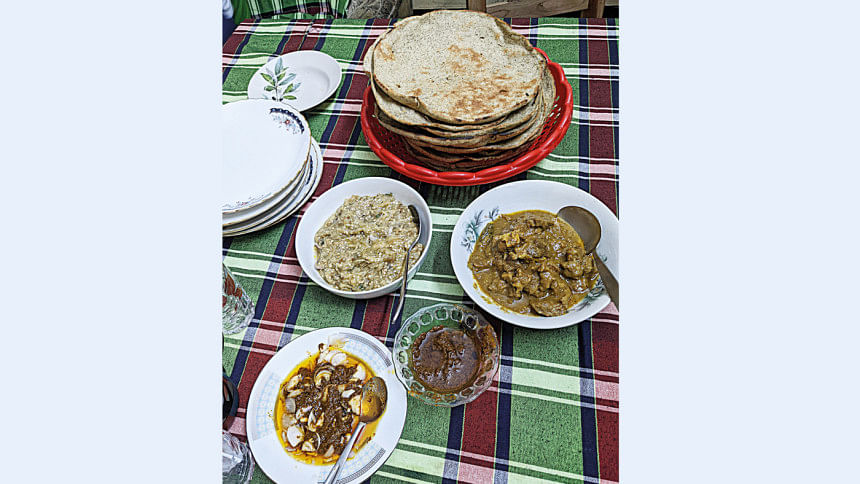
Under the mango tree
The rolling mango orchards were under a canopy of dark green and emerald glossy leaves, and a thick carpet of grass lay under. The dwarf mango tree branches hung low with the weight of the neon green fruits, lending a Christmas light look to the ambience.
The air was thick with a sweet, fruity, and resinous smell, comforting with hints of woodiness. Usually, the heat is trapped inside the orchards, making the place feel like a natural sauna, but my visit on a rainy morning was utterly different.
The experience was like the ones described in books; incessant drizzle made the ground muddy, but the undergrowth and grass were as green as green could be. I was carefully tiptoeing to avoid a fall, and out of nowhere, a ripe mango almost fell on my head; my glee had no bounds. I looked around and saw that the summer rains had made the trees drop quite a few mangoes, so I picked a bag full of them. The man whose orchard it was shook a branch and allowed me to gather my fill.
It was kind of a thrill, I tell you.
The mango calendar
The mango calendar in Rajshahi begins with harvesting early-season miscellaneous mango varieties like Guti aam, but the true season starts with the popular variety Himsagar, also known as Khirsapat, and Gopalbhog, also known as Ranipasand or Laxman Bhog, and the season ends with Fazli, a late-maturing fruit, available after other varieties.
The mango calendar in Bangladesh is dotted with varieties like Langra, Amrapali, Madhu Chushki, Raj Mohan, Gourmati, BARI Aam-4, Ashwina, Ilamati, Dudh Shar, and Hari Bhanga from Rangpur in between.

"Rajshahi's soil is 'doash mati', which translates to loamy soil in English. Loam is a type of soil that is a mixture of soil containing sand, clay, and silt particles, which is just right for mango cultivation. It is aided by the hot and humid tropical weather," says Md Anwarul Haq, a retired forest ranger and chairman of Agro Food Producer.
Producers like Haq take leases of mango gardens for three years and renew their contracts with new tenders. They are the ones responsible for the upkeep of the orchards. They tend to the garden three times a year with full swing tending operation, which includes planting, irrigation, fertilisation, pest control, and pruning. Mango orchards require specific care, and orchards with high planting density need extra maintenance.
One of Huq's smaller gardens, situated inside Rajshahi city on seven bighas or 4.34 acres of land, houses around 100 jhars or mango trees, and each jhar can yield anything from 40 to 100 kgs, depending on the size. There are seasons when the trees rest and do not bear any fruit.
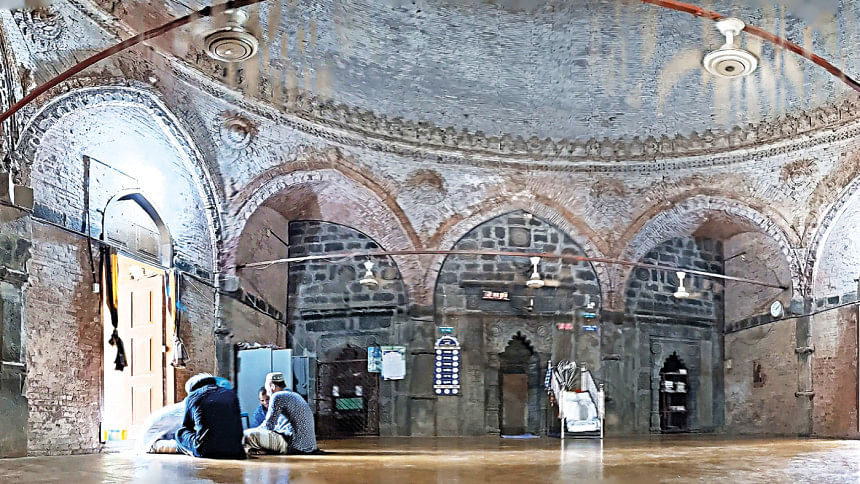
"The district administration office has targeted a harvest this year of around 2.60 lakh tonnes of mangoes from different orchards in Rajshahi, on 18,515 hectares of land. The dates for harvesting different varieties of mangoes are also decided by the office to ensure natural ripening," says Khaled Hossain, a wholesaler with shops in Shaheb Bazar.
You do not just hire random day labourers to harvest mangoes. The workers must be selected and specially trained in mango plucking. The Indigenous tools are jhopa, tushi, and jalta, which are long bamboo poles with a sharp hook or cutter at the end to knock or pull the mangoes off the branches or a net to catch the falling mangoes.
"In my garden, I take extra precautions. A single labourer, hired for Tk 700 a day, can collect around two maunds whereas, in Baneshwar, one man with the same honorarium can collect almost 10 maunds because they do not heed rules," Huq defends his care and differentiates between organic and mass farming.
Baneshwar, a mango market and home to many mango orchards surrounding the market in Rajshahi, is the centre of the mango trade in Bangladesh.
"In my orchard, we use bagging techniques, where individual fruits are covered with a bag while still on the tree. This protects the mangoes from pests, diseases, and physical damage. Bagging leads to higher yields, reducing the need for chemical pesticides, and making it a more environmentally sustainable form of mango farming," he says.
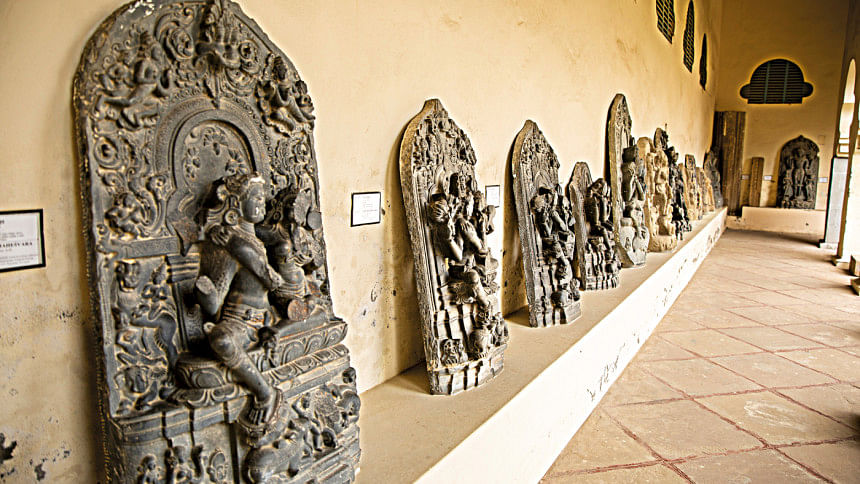
Producers like Huq and vendors like Hossain also want to target the global market with an organic tag because they foresee good business opportunities.
"These growers need government patronage and a way out from syndicated sufferings. To send 1 kg of mango to England, it takes Bangladesh Tk 250 to 300, whereas it takes India a mere Tk 100; this ordeal says a lot about what obstacles producers face," Hossain adds.
According to Anwarul Huq, there must be at least three packaging houses or depots in Rajshahi, Naogaon, and Chapainawabganj to facilitate export.
"We now follow a tedious and cumbersome process of sending the mangoes first to Dhaka, where it is unloaded, treated, quarantined, then reloaded, repacked, and sent to the airport. It makes for system loss," he says.
Mango tourism is new and a trending phenomenon, thanks to social media. People come, visit orchards, select between organic and mass farming, and carry home their favourite variety. In between all these, the wheels of the mango economy spin at full velocity. Baskets, jute bags, paper packages, plastic containers and bags, courier services, train and bus services, rent-a-car businesses, hotels, and Rajshahi tourism all witness lively trade.
Radiant Rajshahi
The sights and sounds of Rajshahi, popularly known as the Silk City and Education City of the country, are plenty and vibrant.
For one, Rajshahi University's Paris Road, lined by graceful tall trees on both sides, this strip is at its finest at dusk, when the light is a tint of gold and blue, it is the best Instagrammable place in the entire Bangladesh.
"The beautiful city has beautiful people with such a beautiful Bangla accent. They make you their own in a jiffy. The tea makers, the shop owners, salespersons, everyone has a happy attitude, and their city is so clean, I don't have enough adjectives to describe their cleanliness. The ornamental streetlights, clean roads, the shores of mighty Padma, their trademark Kalai roti made from Mashkalai dal or split black gram with spicy duck curry by the roadside, their fresh sweets are something you want to see and try for sure," says Rubaiya Sultana, who was on official visit but couldn't resist being a tourist.
"I frankly loved the Puthia Rajbari or Panchani Zamindarbari complex. Built in 1895, by Maharani Hemanta Kumari Devi for her mother-in-law Maharani Sarat Sundari Devi, this Indo-European architecture is steeped in breathtaking history, heritage, and culture. It consists of a cluster of six notable old Hindu temples, built around six royal ponds, and the complex is surrounded by a moat called Shiv Sagar," says Arup Chowdhury accompanying Sultana.
"I was intrigued and mesmerised by the two Anhik mandirs. The term Anhik refers to a place for daily worship rituals and early morning worship. The queen bathed in her private pond and performed her worship for a spiritual blessing at the crack of dawn," says Maya Banerjee, visitor at the complex, wishing for her anhik mandir.
Being on the same wavelength as Banerjee, I strongly believe I was born in the wrong century; my spirit and soul love all things old.
Walking through the corridors of the Varendra Research Museum, the oldest museum in Bangladesh, where artifacts and sculptures of black basalt date from as early as the 9th century, and to the 12th century, I was transported to the eras that time forgot. Established in 1910, the well-kept gardens surrounding the old-style building housing the museum only echo our rich history and cultural aesthetics of the country in times gone by.
Besides, there is the Shah Makhdum Majar, which is under renovation now, the dhopkols, which are essentially water tanks built in the early 1900s, and the famous Rajshahi College, established in 1873, is a fine example of British Indian colonial architecture. Needless to mention, the Baneshwar mango market in Rajshahi district and Chapainawabganj's iconic Kansat mango market should be among the top attractions of Rajshahi tourism.
And oh! I almost forgot it is mandatory to visit the silk industry locality to appreciate Bangladesh's soft mulberry silks.

 For all latest news, follow The Daily Star's Google News channel.
For all latest news, follow The Daily Star's Google News channel. 







Comments